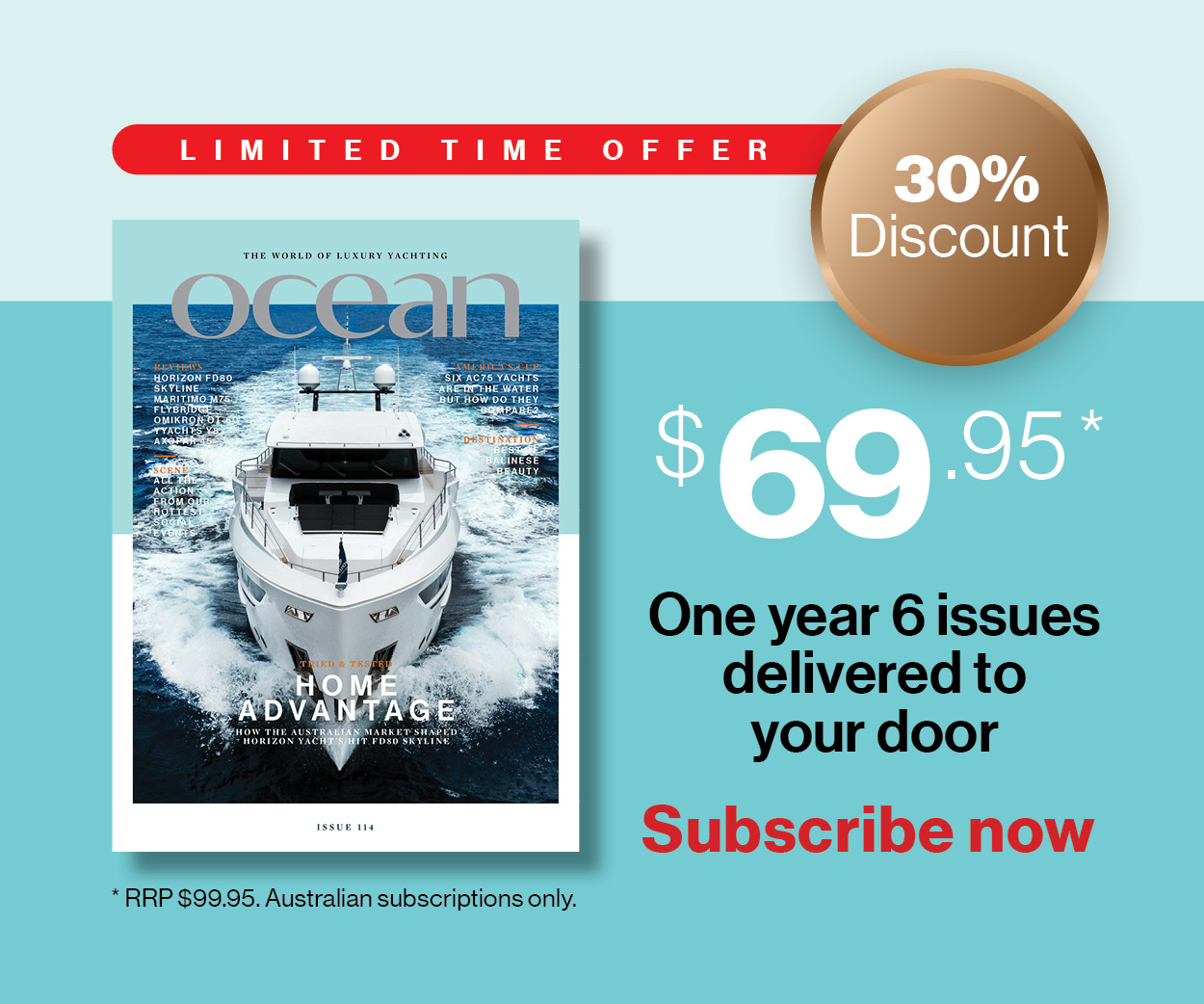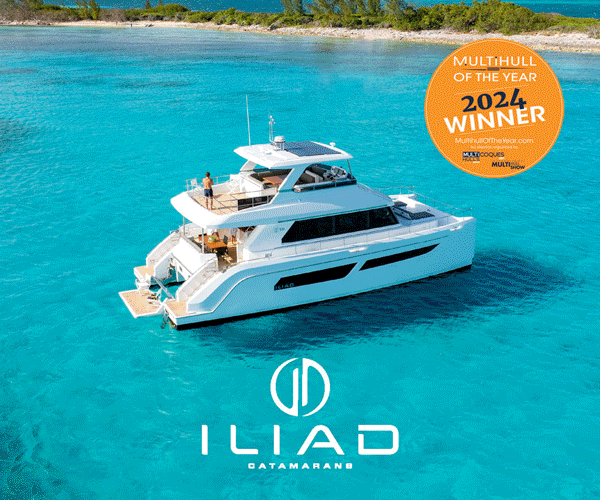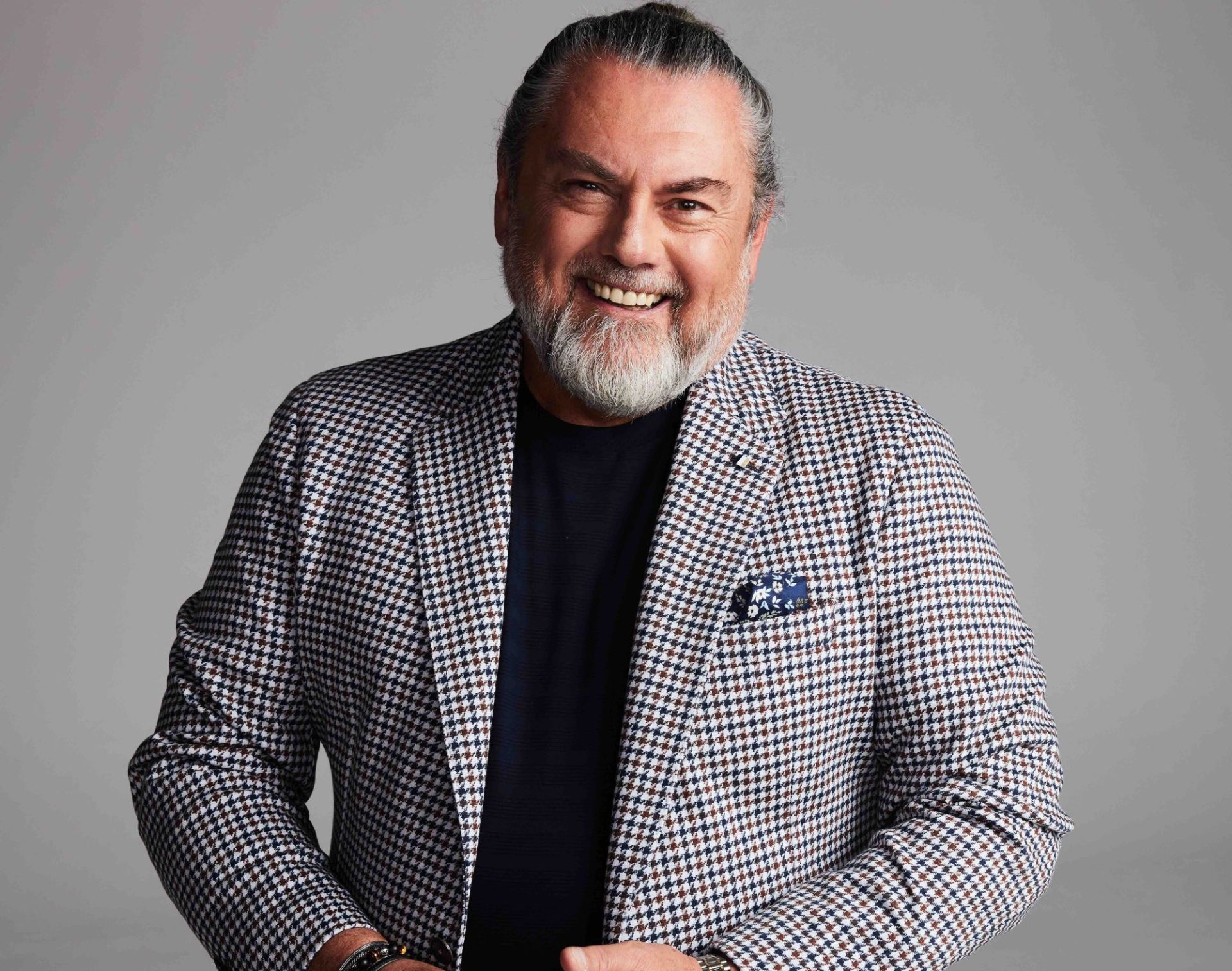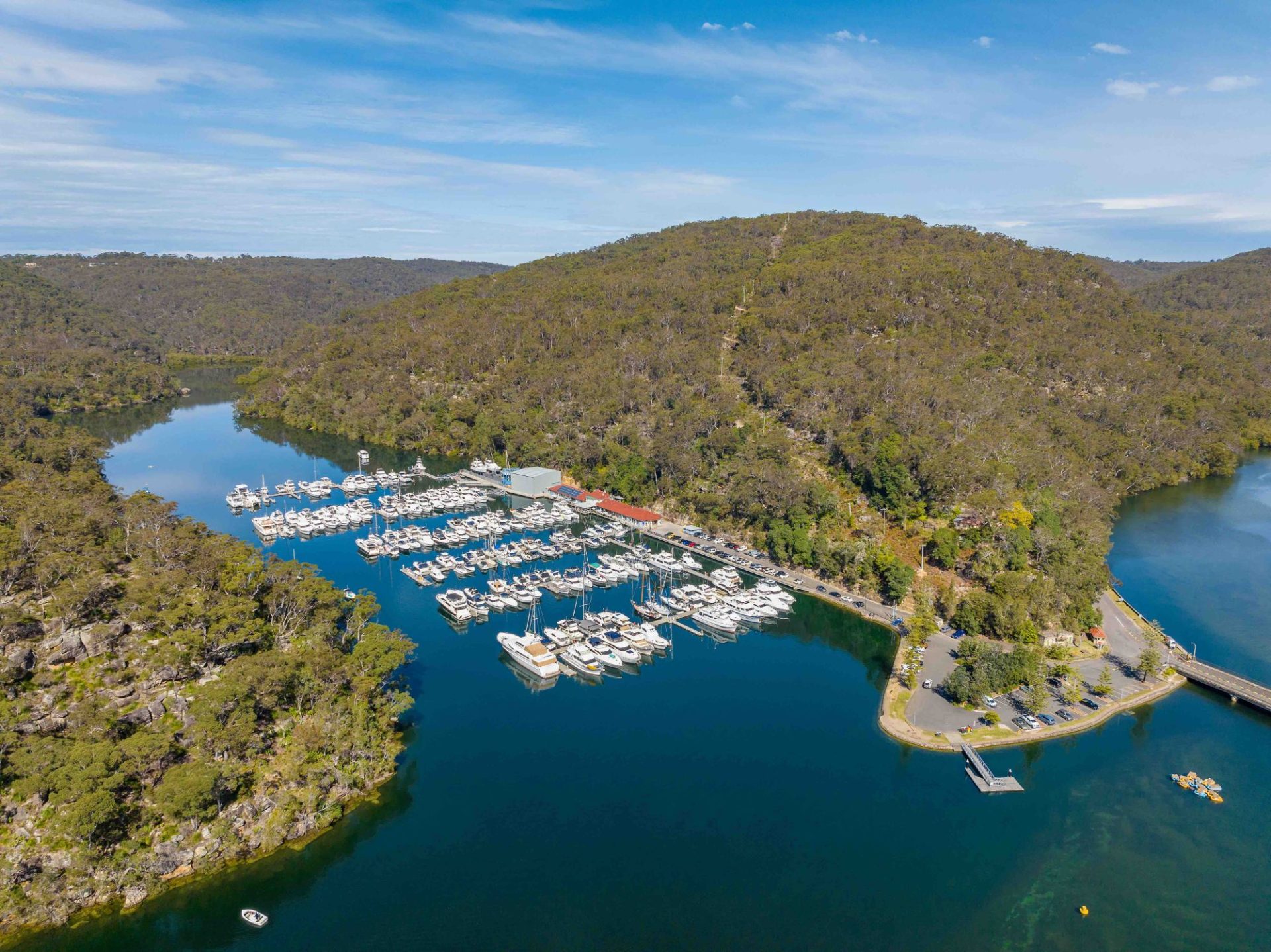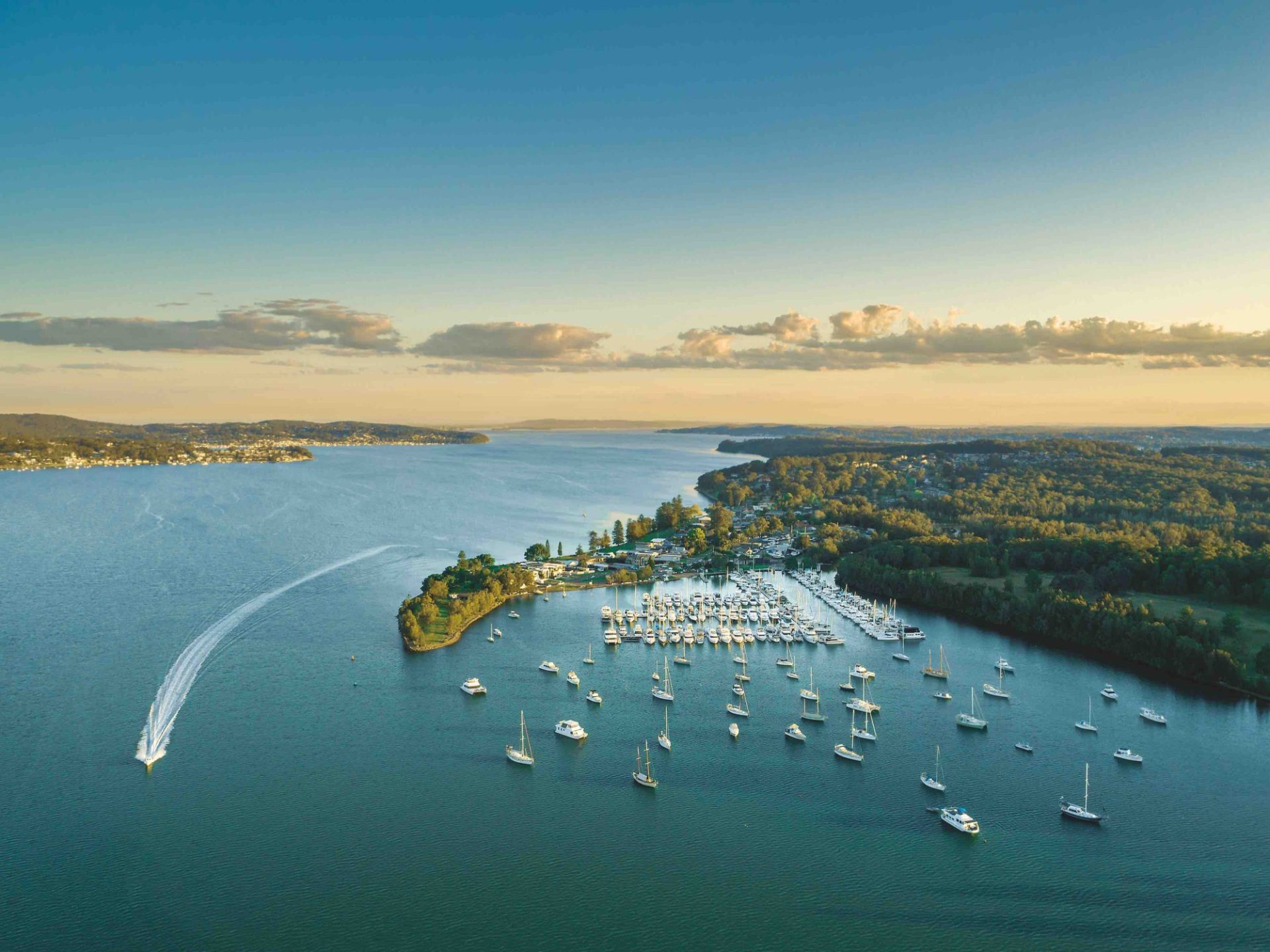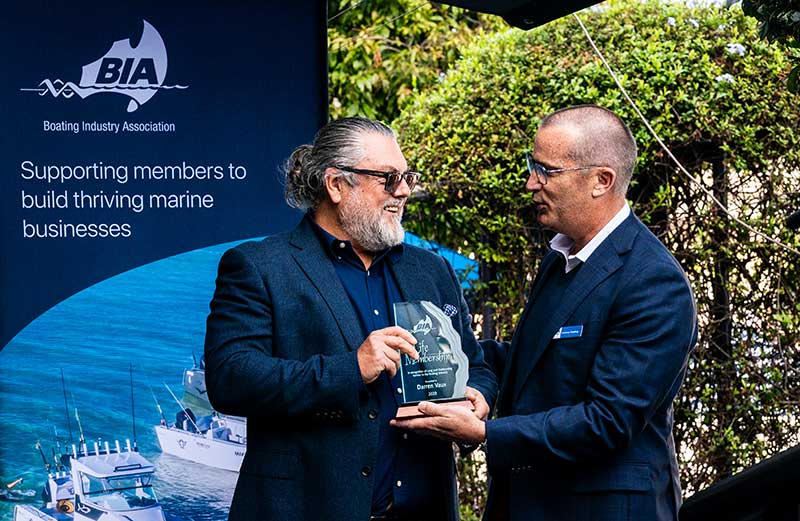The big picture
Darren Vaux shares his journey to becoming President of the International Council of Marine Industry Associations (ICOMIA), the ideals and aims of the organisation, and the issues impacting the boating industries.
Written by Hillary Buckman
31 August 2023
For two decades, Darren Vaux has been a high-profile proponent of the Australian boating and marina industries, co-owning and running award-winning marinas under the Empire Marinas Group and advancing the industry as head of the Boating Industry Association (BIA) and Marina Industries Association (MIA).
His dedication and considerable expertise have propelled him to the role of President of ICOMIA, the voice of the global recreational marine industry, which brings together 37 national associations to share resources and address issues. Here, in this wide-ranging interview, Vaux shares his insights with Ocean.
What was your first experience of boating?
My father had boats, and we used to go fishing and wakeboarding. As a young adult, I bought my own boat, a 230 Sea Ray. Over the years, I’ve owned a series of boats and businesses in property development until around 2004, when I fortuitously ended up in the marina business.
Can you tell us about your journey to becoming President of ICOMIA?
As it often is, it was a reasonably long road to becoming President of ICOMIA. It started with being on the board of the BIA for New South Wales and then in a national capacity for around 18 years. I also represented Australia with ICOMIA for a decade when I chaired the Sustainability Committee and then joined the Executive Committee. Three years ago, I became vice president of ICOMIA and then President last December.
What is ICOMIA’s main agenda?
It’s multifaceted. ICOMIA is an association of associations, so members are all national trade associations. But everyone’s goal is essentially to do two things. First, protect and enhance the prosperity of members through regulation. The other main issue is trade tariffs, international trade and the supply chain.
ICOMIA provides the platform for a range of people within the trade associations globally to work together to solve both sides of that equation – ICOMIA provides the forum that enables our members to solve those sorts of problems. The proactive side of ICOMIA is focused on taking the industry into the future. Decarbonisation, for instance, is a significant issue globally, and we spend an enormous amount of time and investment in research and collaboration.
What’s the biggest issue currently facing our industry?
Without a doubt, climate change, which impacts our industry in numerous ways. As an industry, we’re vulnerable to extreme weather events. The water is our playground, so environmental protection is a priority. We do a lot of work to ensure that the environment we operate in is pristine and we’re non-polluting.
When it comes to decarbonisation, ICOMIA, in conjunction with IMEC, has funded a study by international scientific and engineering consultants Ricardo to do a full life-cycle carbon analysis – a cradle-to-grave assessment of benchmark propulsion systems.
That covers diesel and petrol systems and looks at a whole range of alternatives such as pure electric, fuel-cell driven, alternative fuels and fuels like hydrogen, methanol and ammonia.
These studies cover nine different craft types – from small craft to sailing yachts and up to big motor cruisers – to study the embodied carbon in the manufacturing process, the carbon used during the operating phase, and right up to the dismantling of it to get the true picture of what the carbon alternatives are.
How are you working with governments to ensure that as an industry we’re changing fast enough and working toward emission-free boating so they don’t bring in regulations that negatively impact boating?
That’s what the Ricardo study was about – it looks at the whole cycle. The result is the information that enables us to make informed decisions. The 500- page report drills down to ask, what are your sources of electricity? What are your sources of aluminium? What are the sources of the components? What’s the embodied energy in them? What’s the manufacturing source of them? What’s driving those components?
If you’re using hydrogen in combustion or fuel cell, what’s the source of the hydrogen? Which colour hydrogen? Pure green electrolysis, solar-driven electrolysis hydrogen? Or is it stripped from fossil fuels (the most common way hydrogen is made today)?
Then you’ve got the biofuels, the drop-ins or the recycled cooking oil. All this work aims to give us the hard facts and the intelligence to have proactive conversations with the leading government regulatory environment.
We can use this intelligence to properly inform our members because the biggest concern is a regulator simply decides electric is the answer, and you must be electric by a certain date. That’s when you look at the LCA analysis to prove it’s not necessarily true. In fact, it could be a worse outcome!
The decarbonisation studies are all oriented toward setting a road map for the future. There’s no argument that transition needs to occur. What we need to do is have the intelligence that gives us the right pathway to transition. We can’t ignore the existing fleet, or a fleet currently being manufactured, so how do you deal with that carbon footprint going forward?
Part of the work we’re also doing is looking at the potential for carbon offset and, importantly, where that carbon offset may be oriented toward things that benefit the environment in which we operate.
How does ICOMIA deal with 37 different associations worldwide, all with different government agendas?
We have two main in-person touchpoints with members. The first is our annual congress, which is in San Remo, Italy, in June this year. The other one is METS Amsterdam. ICOMIA also has working groups or committees to deal with core topics.
For example, the technical committee has two in-person meetings at those two events as well as virtual meetings, where members and their technical representatives participate and share information. One of the biggest challenges is members’ different or opposing views.
The environment is challenging because while we accept climate change is real and the industry needs to transition, in some jurisdictions, there may be denial. ICOMIA has to take a central position, moving the process forward, even though some members may not agree. You can’t operate to a unanimous scenario because you wouldn’t move anywhere.
How is the industry going to make the big changes for a cleaner future?
If you look at safety, for example, we didn’t want to force life-jacket compliance. So, the life-jacket technologies developed, and the incident and death rate in Australia decreased because we built the messaging and a culture of safety. That was a long-term project where we had to fight to ensure the regulators didn’t use the car approach and show horrific accidents in ad campaigns.
The thing is, most people need a car, but boating is a lifestyle choice, so the messaging was oriented toward positive cultural change, using education to equate it with seatbelts, which has been very successful. We need to do the same thing with the environment.
We have to apply all this information to the manufacturing process, such as decisions about the right choice of materials and sustainability and recyclability. The elephant in the room is the recycling of lithium-ion batteries.
The recyclability of the embodied materials within a boat is a fundamentally important element. In their current form, GRP, or fibreglass, and carbon fibre aren’t recyclable in the pure sense. Instead, they’re being down-cycled by being crushed and put into concrete as reinforcement. The European Boating Industry Association just published an end-of-life paper on boats, which is important given GRP is now in that 40- to 50-year time zone from when it was first introduced. The second part is the embodied energy, which by default means the embodied carbon in the manufacturing process to create the craft.
Then there’s the question of the means of energy storage and propulsion, and what’s the most effective way of doing that? There’s no single answer. Electric for small craft and PWC makes a lot of sense. Then there will be hybrids because hydrogen as a fuel material, for instance, is effective but very difficult to transport and store.
How is Australia progressing in the environmental space in our industry?
Environmental sustainability is a fundamental criterion of all marinas. We’re leading and collaborating with government and working to improve practices. Our biggest challenge exists in the manufacturing space. Most of our manufacturers have mature environmental practices in work, health and safety. From an environmental protection point of view, it’s more about the industry’s transition to using sustainable materials and embodied energy.
Australia is commensurate with what’s happening in the world. There are some leading manufacturers in some jurisdictions where they’ve put responsibilities onto manufacturers for product custodianship. It’s up to us as an industry to see that as an area where we need to focus our attention.


